|
On 14 December 1962, the NASA Mariner 2 spacecraft flew by the planet Venus at a distance of just 34,762 km in what became the first successful interplanetary space mission. It was the first time that any planet was studied from such a close range and it represented a significant technological and scientific milestone. It was also the first space mission tracked by the newly commissioned CSIRO Parkes Telescope.
For the Mariner 2 mission, the 85-ft diameter antennas of NASA's fledgling Deep Space Network (DSN) were deemed to be sufficient to receive the signals during the encounter at Venus. However, they were considered inadequate for missions to the more distant targets that were being planned at the time. What was needed was an array of significantly larger antennas. The requirements for the proposed large aperture antennas matched the specifications of the Parkes Telescope very closely. This attracted the attention of NASA's Jet Propulsion Laboratory (JPL).
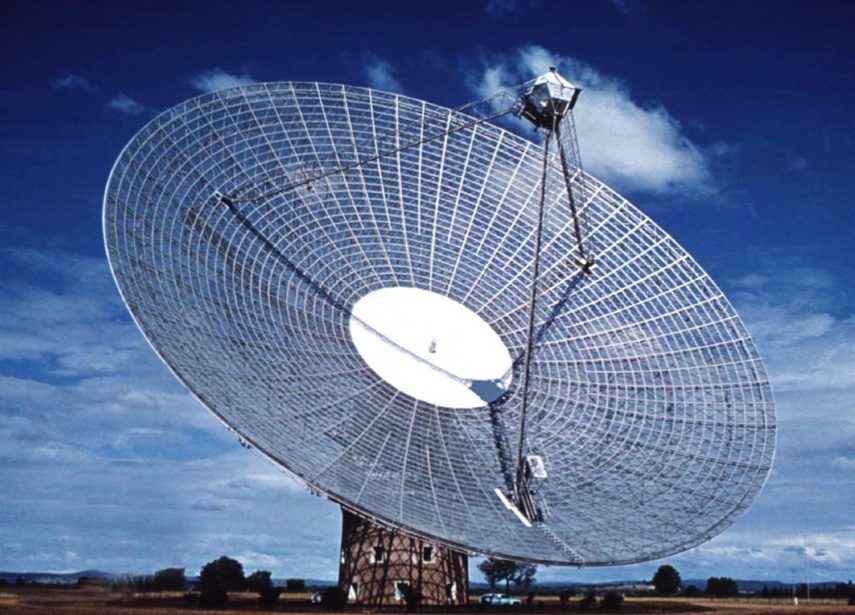 |
| The CSIRO Parkes Telescope as it appeared in the early 1960's. (Image: CSIRO) |
In February 1962, just a few months after the telescope's commissioning, the CSIRO Radiophysics Division was awarded a NASA Research Grant, NsG-240-62, to determine and report on the detailed characteristics of the Parkes telescope. The CSIRO Radiophysics engineer, Harry Minnett, was appointed the Officer-in-Charge of the Advanced Antenna Design to head the study.
As part of the grant, the CSIRO participated in feasibility studies and specification reviews of the JPL antennas. The detailed performance parameters of the Parkes telescope were determined as regards structural behaviour, characteristics of the drive system, characteristics of the master control system and radio frequency performance. In addition, the vibration characteristics were measured as well as the dish shape in the zenith and tilted positions. This information was deemed to be of critical importance in the design of the JPL antennas.
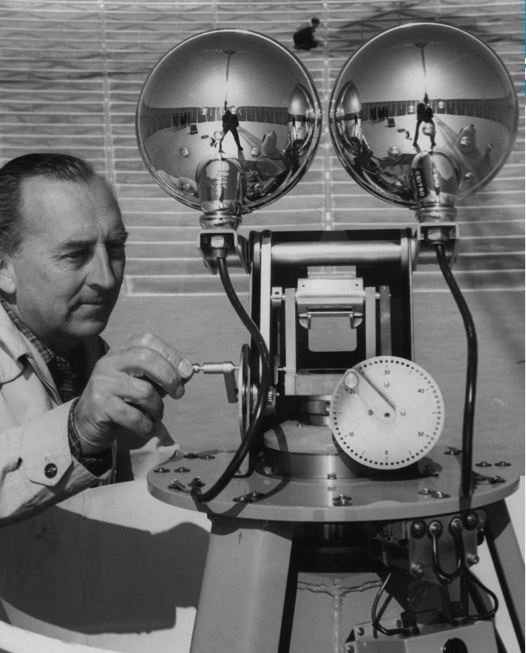 |
| Harry Minnett measuring the dish shape as a function of tip angle. (Image: CSIRO) |
On 27 August 1962, the NASA Mariner 2 spacecraft was launched toward an encounter with the planet Venus. NASA considered it extremely vital that a coordinated program of ground-based observations, both radio and optical, be carried out in conjunction with the Mariner encounter at Venus in order to maximise the scientific return. In June 1962, Parkes was invited to participate in this program.
The Chief of the CSIRO's Radiophysics Division, Edward "Taffy" Bowen, and Harry Minnett, decided that tracking the Mariner 2 spacecraft would be an excellent demonstration of the Parkes telescope's capabilities for communication at great distances. In addition, the track would provide the observatory personnel with valuable experience in tracking and receiving signals from spacecraft which the observatory might be called on to do in future cooperative experiments. Since the observations would provide valuable performance characteristics of the Parkes telescope that would be of interest in the design of the JPL antennas, the tracking costs were included as part of the NASA research grant.
Essentially, the experiment was to be a simple one involving the measurement of spacecraft position, signal level and Doppler frequency to establish the technique. It did not include the reception of telemetry. The Mariner 2 carried an L-band (960 MHz) transmitter, and for these test tracks, JPL loaned Parkes a modified version of the GSDS 960 MHz transportable phase-lock receiver.
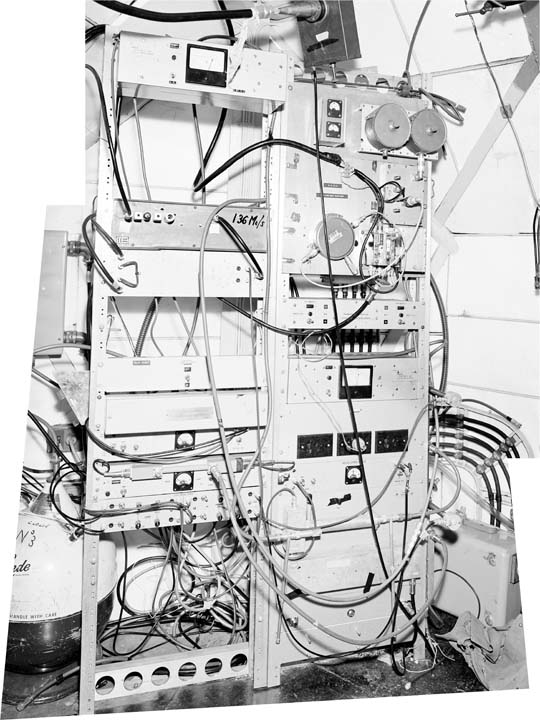 |
The Ancient Mariner: The JPL 960 MHz phase-lock receiver installed at Parkes. (Image: CSIRO) |
Attempts to detect the Mariner 2 signals began on 12 December 1962, two days before the closest approach. Parkes had a gain advantage of 8 dB (about 6 times) over the 85-ft antennas of the DSN, and should have detected the signals easily. However, Parkes experienced great difficulty in finding and locking on to the Mariner signal. There were two reasons for this. One was that the narrow beamwidth of the 210-ft antenna made the accurate pointing of the dish absolutely crucial. The other reason was that the receiver had to be tuned very precisely since the receiver only had a 20 Hz-wide gate which could be placed anywhere in the passband of the receiver. The Doppler shift of the signal had to be known precisely so that the receiver could be tuned manually to the received frequency. Once the signal was detected, the receiver could lock on to it and automatically track the signal. As a result of these, the Parkes team of Doug Cole and Harry Minnett, needed to know both the position and the frequency very accurately. Unfortunately, this proved to be very difficult. Since the Parkes tracks were unofficial and did not involve the reception of telemetry, JPL did not provide them with accurate position and frequency predicts. Harry Minnett and Doug Cole were forced to calculate the position and Doppler shift by hand. They found that they could have an accurate position but incorrect frequency, or vice versa, and they had no way of knowing which. Either way, they were unable to detect the signal at all. After 100 frustrating hours of searching, they contacted the DSN Woomera station and arranged to have the predicted positions and Doppler shifts telexed to them by JPL. Using these predicts, they succeeded in finding Mariner 2 at around 7:00 am on 20 December 1962. They were able to track the spacecraft for several hours until it set at about 1:30 pm later that day.
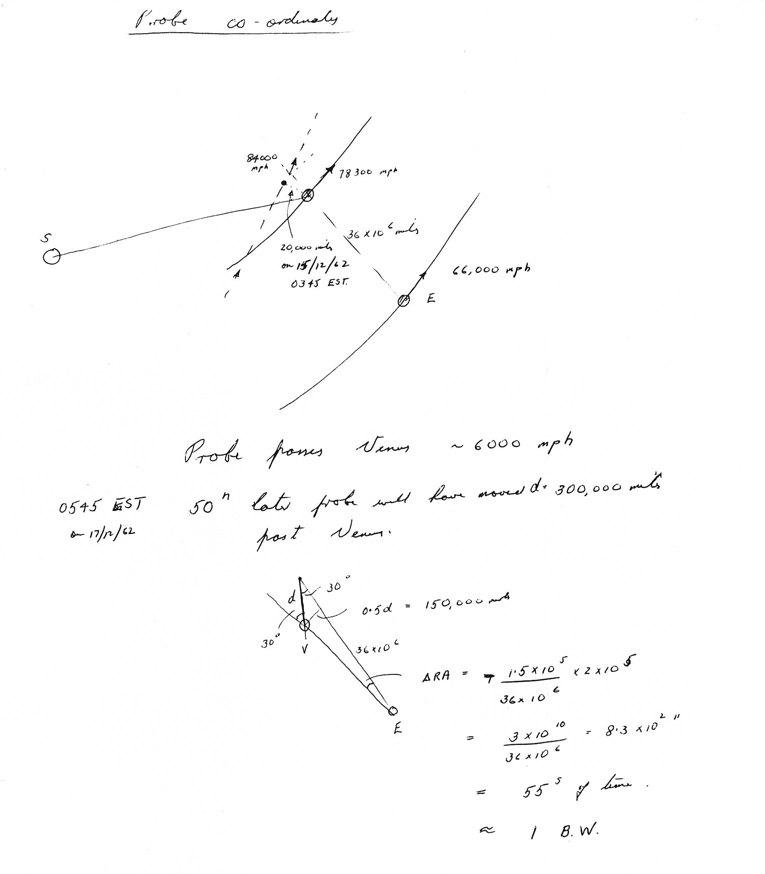 |
An example of Harry Minnett's Mariner 2 position calculations. (Australian National Archives) |
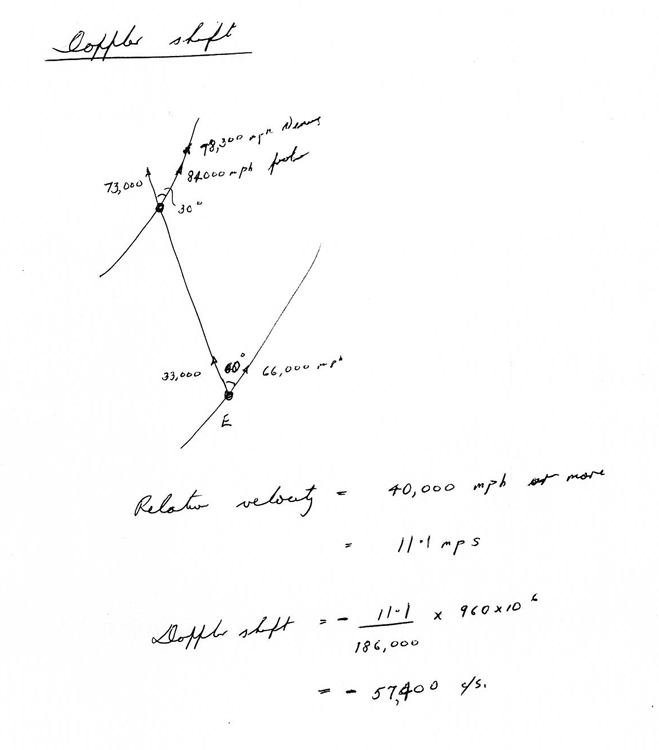 |
An example of Harry Minnett's Doppler shift calculations. (Australian National Archives) |
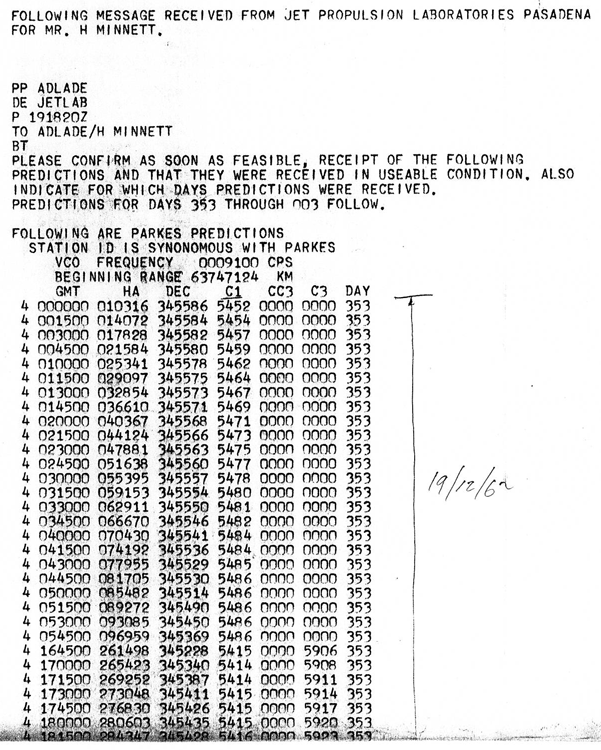 |
The Mariner 2 predicts provided to Harry Minnett by JPL. (Australian National Archives) |
The telescope's measured threshold was -150 dBm and the Mariner 2 signal was about 4 dB above this at -146 dBm. This was consistent with the known signal strength at the time and the measured parameters of the antenna and receiver. Overall, Parkes had a 5 dB advantage over the DSN 85-ft antennas (the Woomera 85-ft antenna by comparison had a signal of -151 dBm). The size of the Parkes telescope should have given it an 8 dB advantage, but unfortunately, a penalty of 3 dB was incurred because a circularly polarised feed was unavailable and Parkes was forced to use a linearly polarised astronomy feed instead. None-the-less, the measured results confirmed the theoretical expectations.
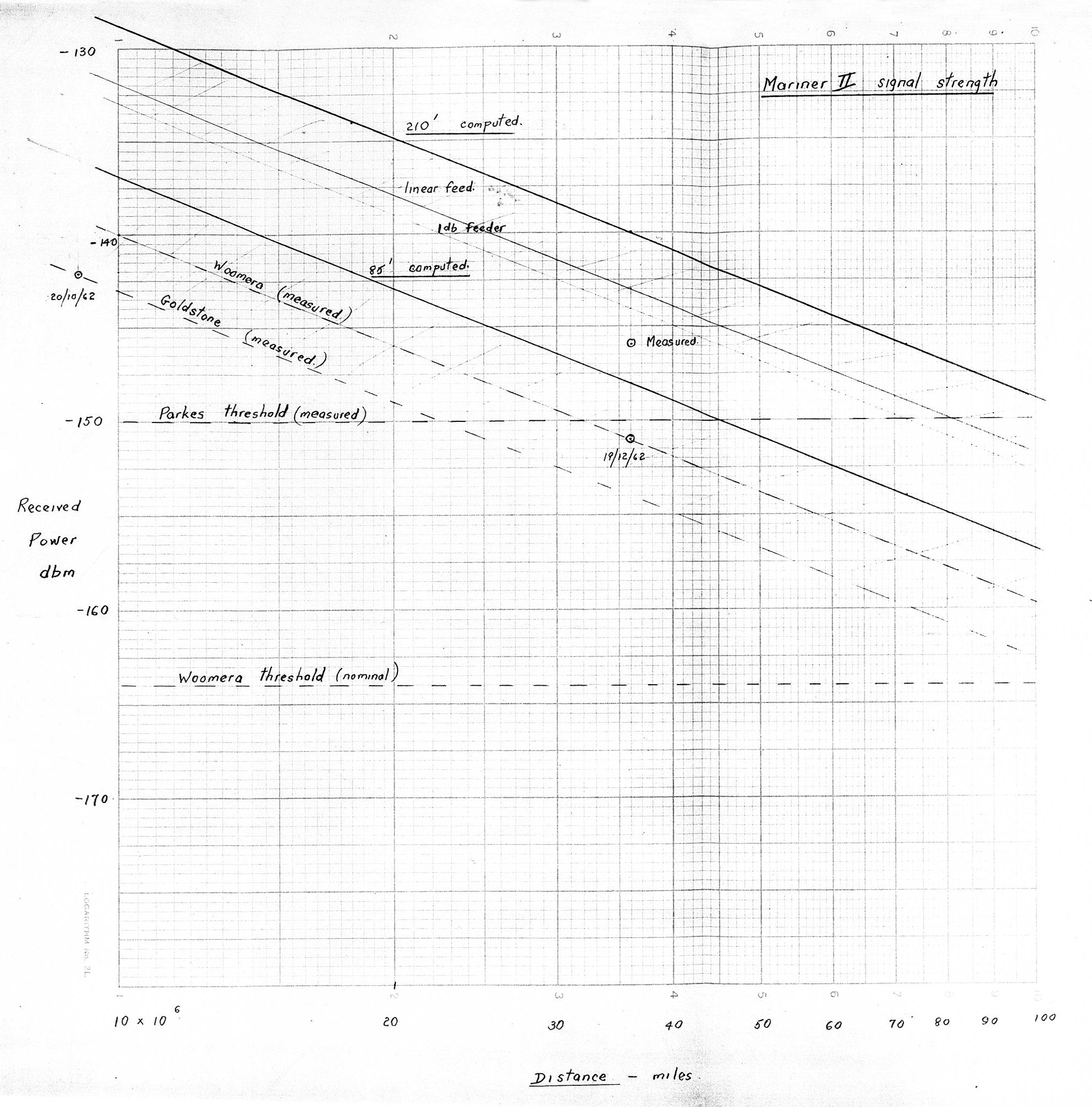 |
Harry Minnett's plot of the Parkes signal levels. (Australian National Archives) |
Doug Cole continued to track Mariner 2 at intervals during the Christmas holiday period until the signals ceased on 3 January 1963.
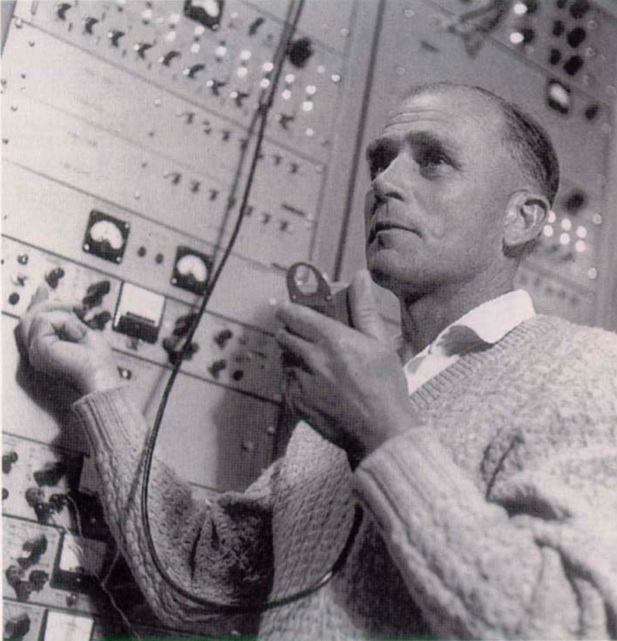 |
| Doug Cole. (Image: CSIRO) |
The experiment was considered a great success and many lessons were learnt that contributed greatly to the success of future cooperative experiments. The results confirmed the suitability of the Parkes Telescope's design. NASA's large aperture antennas were subsequently modeled on the Parkes design; having the same basic form and dimension of the Parkes Telescope and incorporating the master equatorial precision pointing system.
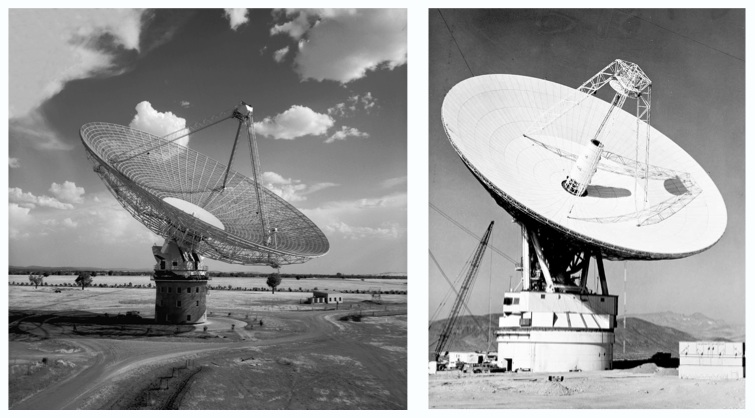 |
Parkes became the model for the large aperture DSN antennas (L: Parkes and R: Goldstone). (Images: CSIRO) |
This historic, first interplanetary mission began the long collaboration between NASA/JPL and Australia's CSIRO in space tracking. As an example, the Parkes telescope tracked Mariner 4 when it encountered Mars in July 1965 and provided the DSN with its only 64-metre capability for the mission. The collaboration culminated with the Apollo manned lunar landing missions, and continued through the Voyager 2 encounters of Uranus and Neptune, Galileo at Jupiter, Huygens at Titan and most recently, Curiosity at Mars.
It all began with Mariner 2 at Venus.
Click here to read Harry Minnett's Progress Report - RPR 141, April 1963.
John Sarkissian
CSIRO Parkes Observatory 20 December 2012
|